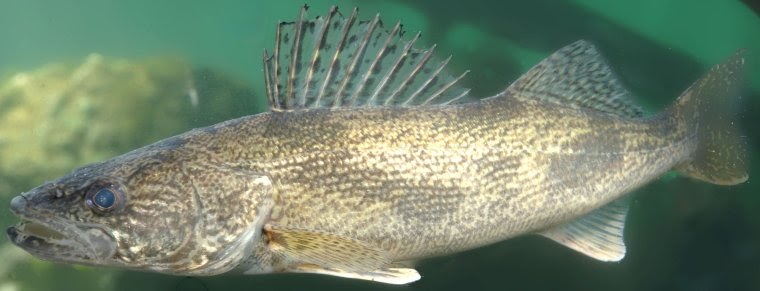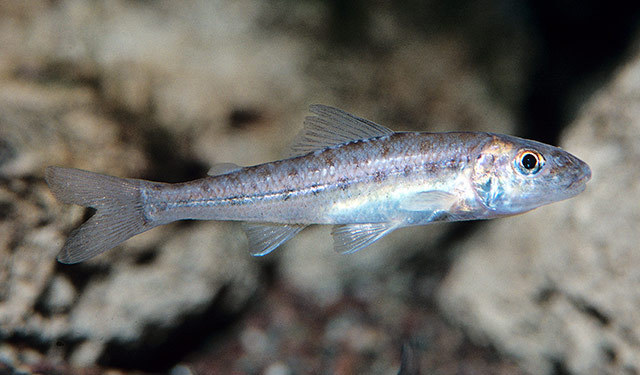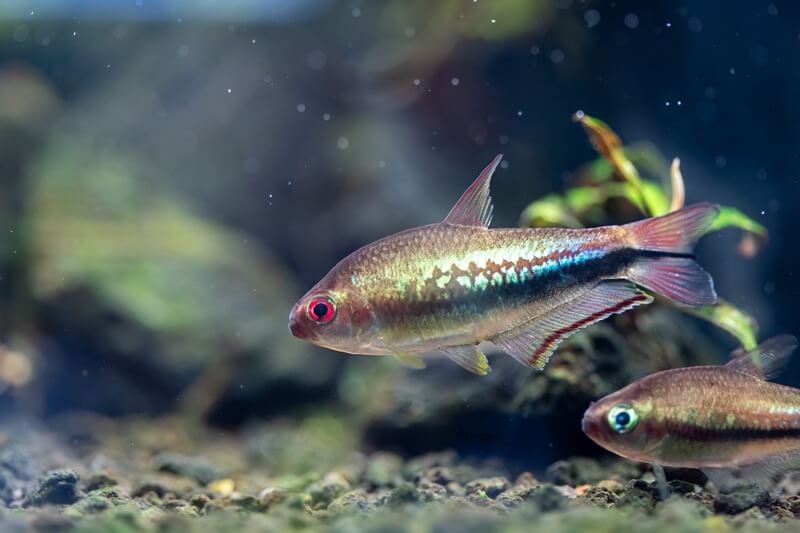Perch fish are a popular gamefish found in freshwater habitats worldwide. There are many types of fish with “perch” in their name, but not all of them are true members of the perch family. True perch are fast swimmers with a long and round body shape, and they have two dorsal fins that can either grow separately or joined.
Perch fish are mainly carnivorous, feeding on insects, crayfish, and other fish, but they are considered omnivores because adult perch will also eat freshwater vegetation and algae.
You are reading: Discover 8 Types Of Perch Fish
Within the family Percidae, there are three main species of perch fish: the European perch fish, the yellow perch fish, and the Balkhas perch fish. In this article, we will discover all types of perch fish, their characteristics, and where they can be found.

8 Types Of Perch Fish
European perch fish (Perca fluviatilis)
The European perch fish (Perca fluviatilis) is a predatory freshwater fish that lives in slow-flowing rivers, deep lakes, and ponds. They are greenish-yellow in color with five to nine dark vertical bars on their flanks and red pelvic, anal, and caudal fins. The first dorsal fin is gray with a black spot at the tip, while the second dorsal fin is greenish-yellow, and the pectoral fins are yellow.
The European perch is most abundant in relatively shallow lakes and lakes with deep light penetration, and less abundant in deep lakes and those with low light penetration. Juvenile perch feed on zooplankton, bottom invertebrate fauna, and other perch fry, while adults feed on both invertebrates and fish, mainly sticklebacks, perch, roach, and minnows.
The European perch is fished for food and as a gamefish, and its flesh is described as good eating, with a white, firm, flaky texture and well-flavored.
Yellow perch fish (Perca flavescens)
The yellow perch fish (Perca flavescens) is a freshwater perciform fish native to much of North America. It is also known as perch, striped perch, American perch, American river perch, or preacher.
The yellow perch was described in 1814 by Samuel Latham Mitchill from New York, and it is closely related and morphologically similar to the European perch (Perca fluviatilis).
The yellow perch is a schooling fish that inhabits lakes, ponds, pools of creeks, and rivers, and it is most commonly found in clear water near vegetation. Adult yellow perch are usually golden yellow, while young are usually more whitish, and they have six to eight dark vertical bars on the sides of their body.
The yellow perch has a spiny dorsal fin with 12-14 spines and a second dorsal fin with 12-13 soft rays plus 2-3 spines, and there is usually a blackish blotch on the membrane between the last 3 or 4 dorsal spines.
Read more : Top 10 Animals That Have Shells
Yellow perch are relatively poor swimmers, and they do not accelerate quickly, but they are schooling fish, which may help overcome this poor swimming ability by providing protection for younger fish and easier prey capture for older fish. The yellow perch is a popular food and sport-fish, with good flavor, and easy to catch, but it is prone to overfishing in some areas.
Balkhas perch fish (Perca schrenkii)
The Balkhas perch fish (Perca schrenkii) is a species of perch endemic to the Lake Balkhash and Lake Alakol watershed system, which lies mainly in Kazakhstan. Here are some characteristics of the Balkhas perch fish:
– The Balkhas perch fish is similar to the European perch and the yellow perch in its general profile and modest size, reaching a maximum total length of 50 cm and weight of 1.5 kg.
– It has a slimmer build and is lighter in color than the other two species of perch.
– The Balkhas perch fish has spines on the tips of the opercula and in the dorsal, pelvic, and anal fins, as well as sharing a similar dentition with the other two species of perch.
– It has ctenoid scales that lend a rough texture to the fish when handled.
– The Balkhas perch fish is a predatory fish that feeds on small fish, crustaceans, and insects.
– The species has suffered a population decline which is blamed on introduced bream and predatory fish such as the Volga pikeperch.
Despite its adaptable external morphology and life strategy, the future of the Balkhas perch fish is uncertain.
White perch fish (Morone americana)

The white perch fish (Morone americana) is a freshwater fish that belongs to the temperate bass family, Moronidae, and is notable as a food and game fish in eastern North America. Here are some characteristics of the white perch fish:
– The white perch fish is not a true perch but is a member of the temperate bass family, Moronidae.
– The white perch fish is a small silvery, greenish-gray fish with a dark, highly domed back, and a whitish belly.
– The white perch fish has a spiny dorsal fin with 12-13 spines and a second dorsal fin with 1 spine and 12-13 soft rays.
– The white perch fish is a predacious and opportunistic feeder, with young feeding primarily on zooplankton and adults feeding on aquatic insect larvae, minnows, and fish eggs.
– White perch are primarily piscivorous, feeding on other fish such as those in the families Cyprinidae and Osmeridae.
– The white perch fish is normally found along the Atlantic coast of North America from New Jersey to South Carolina, but it has been introduced into Lake Erie and Lake Ontario, and many smaller lakes.
– White perch usually live in estuaries (such as the Chesapeake Bay), where the water is slightly salty, but they can also live in freshwater, as in Lake Erie and Lake Ontario.
– White perch are important to humans as a source of food and recreational fishing, with many millions caught each year, especially along the Atlantic coast from Massachusetts to North Carolina.
The white perch fish is not a true perch, but it is a popular gamefish and food source in eastern North America.
Silver perch fish (Bairdiella chrysoura)
The silver perch fish (Bairdiella chrysoura) is a species of marine ray-finned fish belonging to the family Sciaenidae, the drums and croakers. Here are some characteristics of the silver perch fish:
– The silver perch fish is also known as the American silver perch, silver croaker, or goldtail croaker.
– The silver perch fish is a small fish that grows up to 20 cm (7.9 in) in length, but can be found uncommonly up to 30 cm (12 in).
– The silver perch fish has a silvery, greenish or bluish-gray body with a faint, dusky stripe that runs along the length of the body to the tail, and a silvery belly and high, rounded back.
– The silver perch fish has a deep notch in its dorsal fin, and the fins on the lower part of its body are yellowish.
– The silver perch fish is a member of the drum and croaker family, and it has an oblong and laterally compressed body.
– The silver perch fish is found inshore in seagrass beds, tidal creeks and rivers, and marshes along the eastern coast of North America from New York to Mexico.
– The silver perch fish spawns in shallow, saline portions of bays and other inshore areas, peaking between May and September.
– Silver perch are rarely targeted as game fish due to their small size, though they are considered good eating and are most commonly caught as bycatch when fishing inshore or nearshore for species such as black drum and sheepshead.
The silver perch fish is a small, silvery fish that is commonly found in shallow waters along the eastern coast of North America.
Walleye fish (Sander vitreus)
The walleye fish (Sander vitreus) is a freshwater fish that belongs to the temperate bass family, Moronidae. Here are some characteristics of the walleye fish:
Physical Characteristics:
– Walleye fish are relatively small for predatory fish, reaching an average adult size of 350mm among males and 450mm among females.
– Walleye fish are darkly colored on top, with colors ranging from brown, to olive, to dark yellow with a paler underside, ranging from white to pale yellow.
– Walleye fish have silvery eyes that have a reflective underlayer, which causes it to reflect in the dark.
– Their mouths contain a series of very sharp teeth, specialized for a piscivorous lifestyle.
Habitat and Behavior:
– Walleye fish prefer murky water, with less than 2 meters of light penetration.
– By day, walleye fish rest on their preferred substrate, sand and large gravel, with plenty of submerged vegetation in a moderate current.
– Walleye fish tend to do well in large shallow lakes with plenty of littoral and sublittoral zones and minimal seasonal stratification.
– Walleye fish are top predators, which means that they do not have any natural predators in their habitat except humans.
– Walleye fish are flexible and relatively indiscriminate predators that eat anything from bugs and fish to worms.
Fishing and Conservation:
– Populations of walleye fish are managed by humans as a game fish.
– Walleye fish are important to humans as a source of food and recreational fishing, with many millions caught each year.
– Overall, walleye fish are not threatened or endangered.
The walleye fish is a popular gamefish and food source in North America, and it is known for its sharp teeth and excellent night vision.
Sauger fish (Sander canadensis)

Read more : Discover 6 Animals That Lurk Atop Pennsylvania’s Tallest Mountain
The sauger fish (Sander canadensis) is a freshwater fish that belongs to the perch family, Percidae. Here are some characteristics of the sauger fish:
Physical Characteristics:
– The sauger fish is an elongate, cylindrical fish with a torpedo-shaped body and dual dorsal fins.
– Sauger fish have thin, dark-yellow to brown bodies that have large, dark saddles on their sides and white undersides.
– Sauger fish have large canine teeth, which are one of their main distinguishing characteristics.
– Sauger fish have ctenoid scales, which are common in advanced fishes.
– Sauger fish have a truncated caudal fin, which means squared off at the corners, a characteristic of the family Percidae.
Habitat and Behavior:
– Sauger fish are freshwater percids native to the Nearctic region, and they inhabit most of the continental United States, east of the Rocky Mountains.
– Sauger fish are migratory and are capable of swimming into fast currents with minimal drag on their bodies.
– Sauger fish feed on a variety of invertebrates and small fishes depending on the time of year and size of the sauger.
– Sauger fish are similar in appearance to walleye fish, but they have a different coloration and pattern, and they have a more slender body.
Fishing and Conservation:
– Sauger fish are important to humans as a source of food and recreational fishing, with many caught each year.
– Populations of sauger fish are managed by humans as a game fish.
– Sauger fish are not threatened or endangered.
The sauger fish is a freshwater fish that is similar in appearance to the walleye fish, and it is an important source of food and recreational fishing.
Trout-perch fish (Percopsis omiscomaycus)

The trout-perch fish (Percopsis omiscomaycus) is a freshwater fish that belongs to the family Percopsidae. Here are some characteristics of the trout-perch fish:
Physical Characteristics:
– The trout-perch fish is a small, silvery fish that grows up to 20 cm (7.9 in) in length.
– The trout-perch fish has a thick body with a long head, long snout, and a small mouth.
– The trout-perch fish has a single dorsal fin and an adipose fin.
– The trout-perch fish is overall silvery or nearly transparent in appearance with rows of dark spots on along the sides of their bodies both along their lateral line and above it.
– The fins of the trout-perch fish are almost entirely transparent.
Habitat and Behavior:
– The trout-perch fish is a freshwater fish that prefers clear to slightly turbid water, and it is found in rivers and lakes throughout North America.
– The trout-perch fish is a generally small fish found in deep waters by day, but which migrate to shallower waters at night.
– The trout-perch fish is most often seen washed up on beaches and is rarely seen alive or correctly identified.
– The trout-perch fish is an important source of food for many predator fish such as walleye, northern pike, and lake trout.
– The trout-perch fish is not a major human fishery, but it is occasionally used as a bait fish.
The trout-perch fish is a small, silvery fish that is found in freshwater habitats throughout North America. It is an important food source for many predator fish, but it is not commonly fished by humans.
FAQS
1. What are the different types of perch fish?
There are many types of fish with “perch” in their name, but not all of them are true members of the perch family. Within the family Percidae, there are three main species of perch fish: the European perch fish, the yellow perch fish, and the Balkhas perch fish. Other types of perch fish include the white perch fish, the silver perch fish, the walleye fish, the sauger fish, and the trout-perch fish.
2. What are the physical characteristics of perch fish?
Perch fish have long, round bodies and rough scales. They have paired pectoral and pelvic fins as well as two dorsal fins. The dorsal fins can either grow separately or joined, depending on the species. Perch fish are generally small, with an average adult size of 350mm among males and 450mm among females. They have a variety of colors, including yellow, red, black, white, and green.
3. What is the habitat of perch fish?
Perch fish are freshwater fish that inhabit rivers, lakes, and streams throughout North America, Europe, Asia, and Australia. They prefer clear to slightly turbid water and are found in both shallow and deep waters.
4. What do perch fish eat?
Perch fish are omnivores, feeding on insects, crayfish, and other fish, but they are considered omnivores because adult perch will also eat freshwater vegetation and algae. Their diet varies depending on the species and the time of year.
5. Are perch fish important to humans?
Perch fish are important to humans as a source of food and recreational fishing, with many millions caught each year. They are considered by many anglers to be some of the best freshwater gamefish in the world.
6. Are perch fish threatened or endangered?
Overall, perch fish are not threatened or endangered. However, some populations of certain species may be threatened due to overfishing or habitat loss.
Source: https://petstutorial.com
Category: Animals










